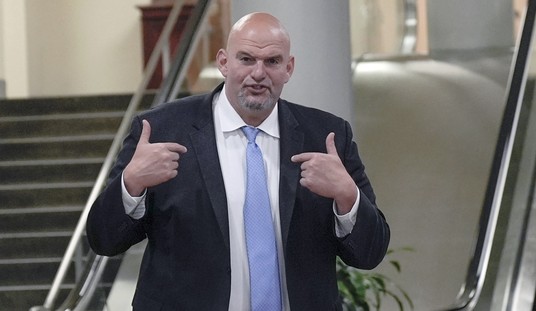The first Baltimore police officer, William G. Porter, put on trial in connection to the controversial arrest and death of Freddie Gray in Baltimore has ended in a mistrial. After three days of deliberation, the jury, seven women and five men, were still deadlocked, causing the presiding judge to declare a mistrial, according to The New York Times. Porter was charged with misconduct in office, involuntary manslaughter, second-degree assault, andreckless endangerment:
You believe you’ve reached a point where you believe you will not come to a decision on any of the charges?” Judge Barry G. Williams of the Baltimore City Circuit Court said, shortly after 3 p.m., to the weary-looking group of seven women and five men, most of whom are black, who had started deliberations Monday afternoon.The judge dismissed the jury, convened a brief private conference with lawyers, and then announced: “I do declare a mistrial.”
The jury’s inability to reach a verdict after two weeks of impassioned testimony threw into question the five other pending prosecutions and left officials and residents of this tense city frustrated and uncertain about what would come next in a drama that began in April.
Outside the courtroom, a demonstrator used a megaphone to announce the decision, shouting, “They just declared a mistrial!” He quickly added, “Justice has not been served,” and “the system has failed us once again.”
A handful of protesters began chanting: “No justice, no peace!” and “All night, all day, we will fight for Freddie Gray!”
Jurors deliberated for over 16 hours over the last three days and could not reach a verdict. CNN reported that prosecutors looked “exasperated,” while Baltimore’s State Attorney Marilyn Mosby “looked visibly upset.” Mayor Stephanie Rawlings-Blake issued a statement calling for her residents to respect the judicial process. She also reminded those who are most certainly going to protest the ruling that the city is prepared to respond to “any disturbance,” and that the businesses and neighborhoods of Baltimore will be protected.
Recommended
A few minutes ago, Judge Barry G. Williams declared a mistrial in the criminal case of Officer William Porter because the jury was unable to reach a unanimous verdict. It is now up to State’s Attorney Marilyn Mosby to determine whether to further pursue criminal charges. This is our American system of justice. Twelve Baltimore residents listened to the evidence presented and were unable to render a unanimous decision. As a unified city, we must respect the outcome of the judicial process. In the coming days, if some choose to demonstrate peacefully to express their opinion, that is their constitutional right. I urge everyone to remember that collectively, our reaction needs to be one of respect for our neighborhoods, and for the residents and businesses of our city. In the case of any disturbance in the city, we are prepared to respond. We will protect our neighborhoods, our businesses and the people of our city."
Out of an abundance of caution, I activated Baltimore City’s Emergency Operations Center at 10:00 a.m.
— Mayor Rawlings-Blake (@MayorSRB) December 14, 2015One of the main points made by the prosecution was how long does it take to secure a seatbelt for a person in police custody, or call for medical assistance. Officer Porter, who joined the Baltimore Police Department in 2010, testified that he never secured anyone in the police vans due to safety concerns:
Porter said that of the roughly 150 prisoners he has placed in police wagons since joining the Baltimore Police Department in 2010, none was secured with a seat belt -- partly out of concern for officers' safety while in the wagon's tight quarters.Prisoners were never secured with seat belts during field training, and though cadets were instructed to secure prisoners with seat belts, they were not shown how, Porter said.
During his closing arguments, defense attorney William Murtha said the prosecution's case was full of holes, and that the law requires them to reach a verdict based on the "standard of a reasonable police officer."
There is an absolute absence of evidence that officer Porter acted in an unreasonable manner," he said.
Testimony in the trial began December 2.
According to the Baltimore Sun, Porter’s actions were called “perfectly reasonable” by Timothy Longo, a 18-year veteran of the Baltimore police force, who has since received a law degree and now serves as the police chief of Charlottesville, Virginia. Moreover, many officers who testified also never secured those they arrested and placed into police vans with seat belts. To prove involuntary manslaughter the state had to show Porter’s actions went far beyond normal department policy:
His [Longo] testimony drew the ire of Chief Deputy State's Attorney Michael Schatzow, who said he could not understand how a police chief and training expert could make excuses for failing to follow policies that could have saved Gray's life."Isn't the purpose of the general orders and policies and procedures ... to guide and mandate the discretion of an officer?" Schatzow asked.
Longo's take on Porter's actions highlight the divide between police, many of whom strongly oppose the decision of State's Attorney Marilyn J. Mosby to file criminal charges against the six officers involved in Gray's arrest, and members of the public who believe that police routinely evade punishment when people die in interactions with officers.
[…]
During seven days of testimony, Porter's attorneys have sought to cast doubt about how and when Gray was injured. Porter took the stand Wednesday as his team opened their defense.
He said Gray told him he needed urgent medical care, but did not say why. Porter said he was nevertheless set to accompany Gray to Bon Secours Hospital to be examined. Before he could, Gray was found unconscious in the back of the van.
To prove that Porter committed involuntary manslaughter, his attorneys say, prosecutors must show that his conduct deviated significantly from what an officer would reasonably have done.
[…]
The defense has called several officers to the stand to back up Porter's actions, among them three who were involved at different points during Gray's arrest. Prosecutors granted immunity to at least two of them but did not call them as witnesses.
As defense witnesses, they echoed Porter's testimony that those arrested are rarely if ever secured in police vans with seat belts, and that officers are inundated with departmental directives and have foggy recollections of their training.
Officer Mark Gladhill testified Thursday that he saw Gray inside the police transport van kneeling and supporting his weight after the point at which the state has alleged that Gray had suffered a severe injury and needed urgent care.
Gladhill said he had participated in 50 to 100 arrests during his time on the force and only used seat belts on prisoners when they were placed in his police cruiser.
Officer Matthew Wood, who was present at two of the van stops, said he had participated in 100 arrests and could not recall a detainee ever being put in a seat belt in a van.
Officer Zachary Novak, who helped load Gray into the van, testified Wednesday that he believed that only 10 percent of arrestees loaded into vans are secured with seat belts.
“We have a chance to show the country how to be heard peacefully” #Baltimore @MayorStephanie after mistrial. https://t.co/njqjdMBAYj
— The Situation Room (@CNNSitRoom) December 16, 2015























Join the conversation as a VIP Member